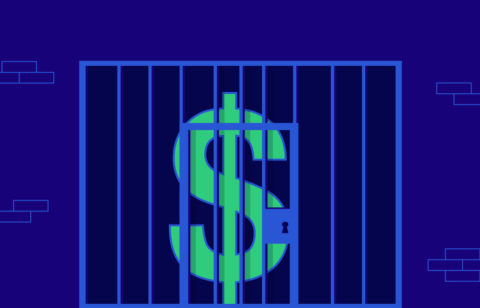Families who find themselves drowning in debt are perfect candidates for debt relief because it improves their overall well-being. Being deeply in debt can have a negative effect on your mental health and physical health. You might find yourself tossing and turning every night wondering how you will ever pay off all your debt. It can also hurt your productivity at work or even end up tearing apart your family.
The “Doomsday” Solution
In the worst case scenario, you could file for bankruptcy. However, bankruptcy is usually thought of as a last resort. It can stay on your credit report and affect your credit score for as long as 10 years. You would have a hard time getting any new credit during that time, meaning it could be difficult to buy a house or car, or even rent an apartment.
Debt Settlement
An alternative to bankruptcy is a strategy called debt settlement. To use this strategy, you first need to have the ability to sock money into a settlement fund. Many people use the money they would normally pay to their creditors to fund this account. After saving for six months or so, you should have a decent chunk of change available to start making settlement offers. It takes a strong constitution to get through those months because you will undoubtedly be harassed by lenders and collection agencies.
Next, you contact your creditors somewhere around month five or six and offer to settle your debts. Your goal is to get your creditors to reduce your debts to a fraction of what you owe. You do this by telling them that you have a certain amount of cash available and will pay immediately if they agree to settle your debt for that amount. Of course, this means you must have the cash available to pay off the settlement.
Why Creditors Might Agree
Many creditors will agree to settling your debts for less than the full balance because it is better than having you file for bankruptcy, in which case they may get zero cents on the dollar. Even if your creditors decide to sell your debt to a collection agency, there’s a good chance they will only get a few cents on the dollar. So if your settlement offer beats what they would get by selling the debt, they’ll be even more likely to accept it.
Starting the Process
One of the most important parts of debt settlement is to make sure you have everything in writing. Start the process by requesting all your credit reports from the three credit reporting bureaus: Experian, TransUnion and Equifax. You can get all three of them with one request on the site AnnualCreditReport.com. Next, make a list of all the companies where you have unsecured debts, like credit card debt. You will need to call each one, including any collection agencies, and make your settlement offer.
Your first offer may not be accepted. In fact, the settlement process can drag on for several months. Some of your creditors and collection agencies may continue to harass you during this time or even threaten to sue.
Get It All in Writing
You will probably get different settlements with different creditors. In other words, some might agree to settle for a very low amount of what you owe while others might not budge one inch. When a creditor does agree to settle your debt, be sure to get all the relevant information in writing.
This should include how much you have agreed to pay, how you will make your lump sum payment (with a cashier’s check, by electronic bank transfer, etc.), and by what date you will make the payment. It is also very important to get a document from each creditor that your debt is marked “paid in full.”
Professional Debt Settlement
If debt settlement sounds appealing but you’re not sure you can or want to handle it on your own, National Debt Relief can help. Our debt coaches have years of experience negotiating debt settlements that could save you thousands of dollars. Fill out our free debt analysis form and see what we can do for you.









